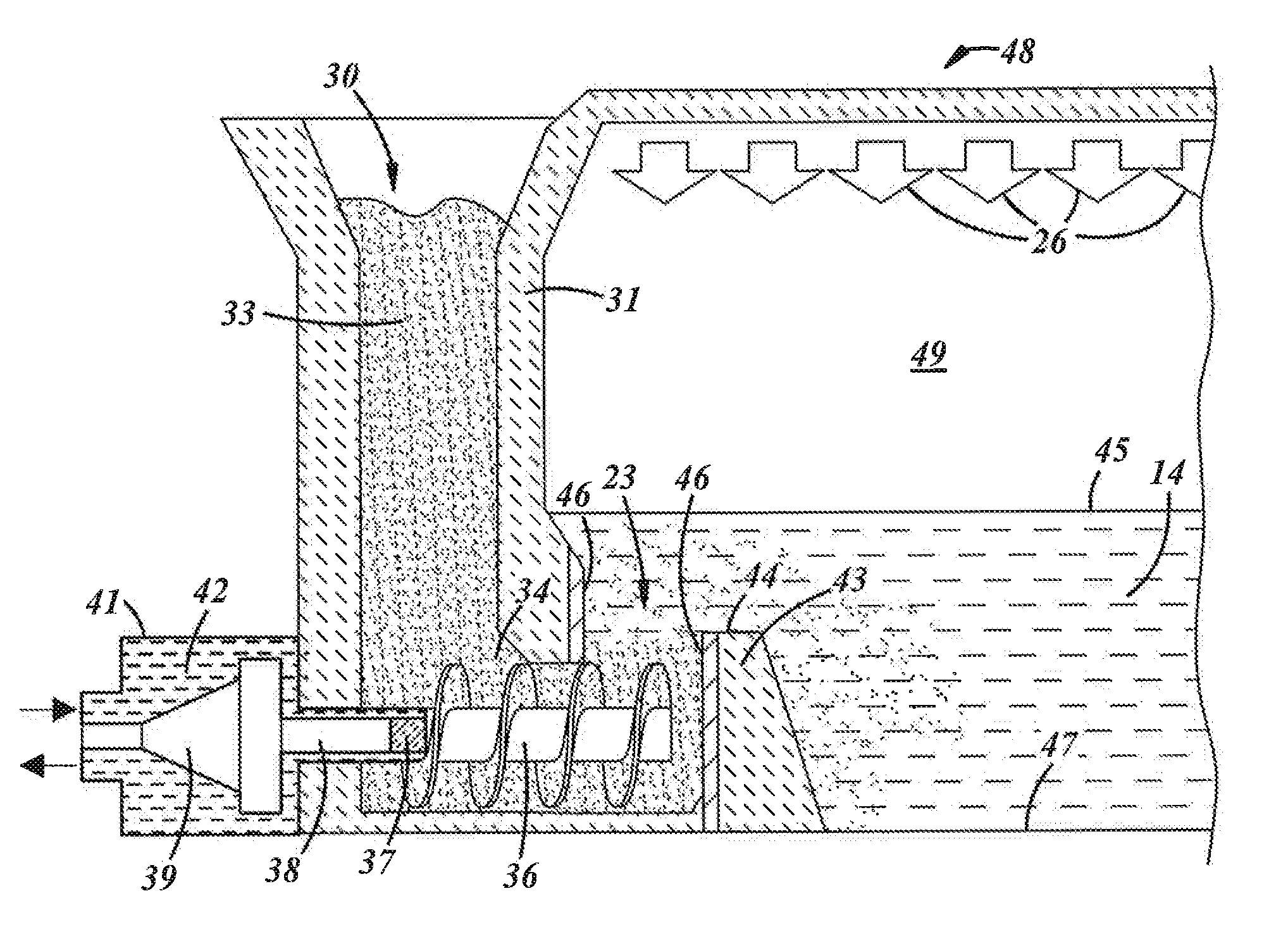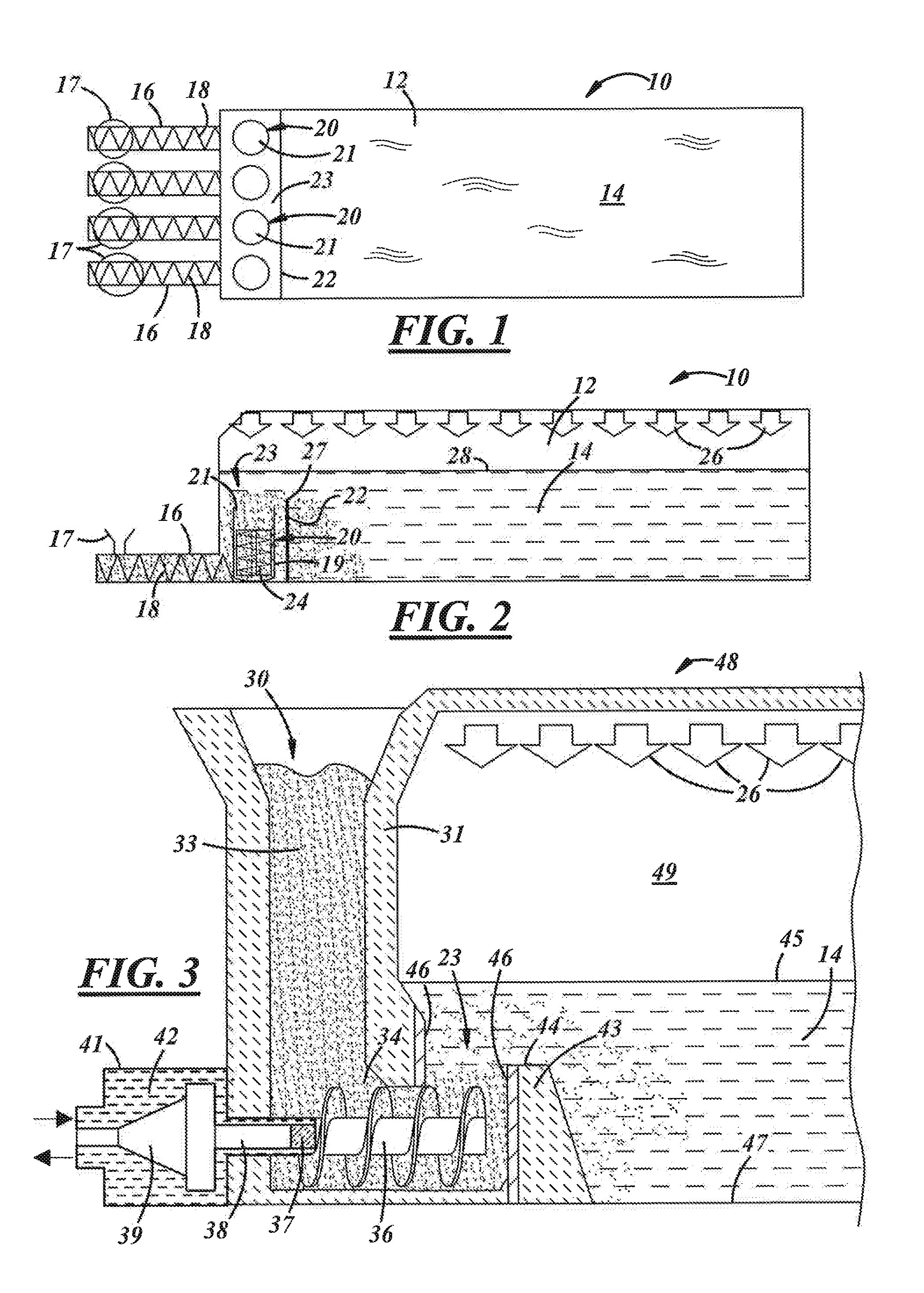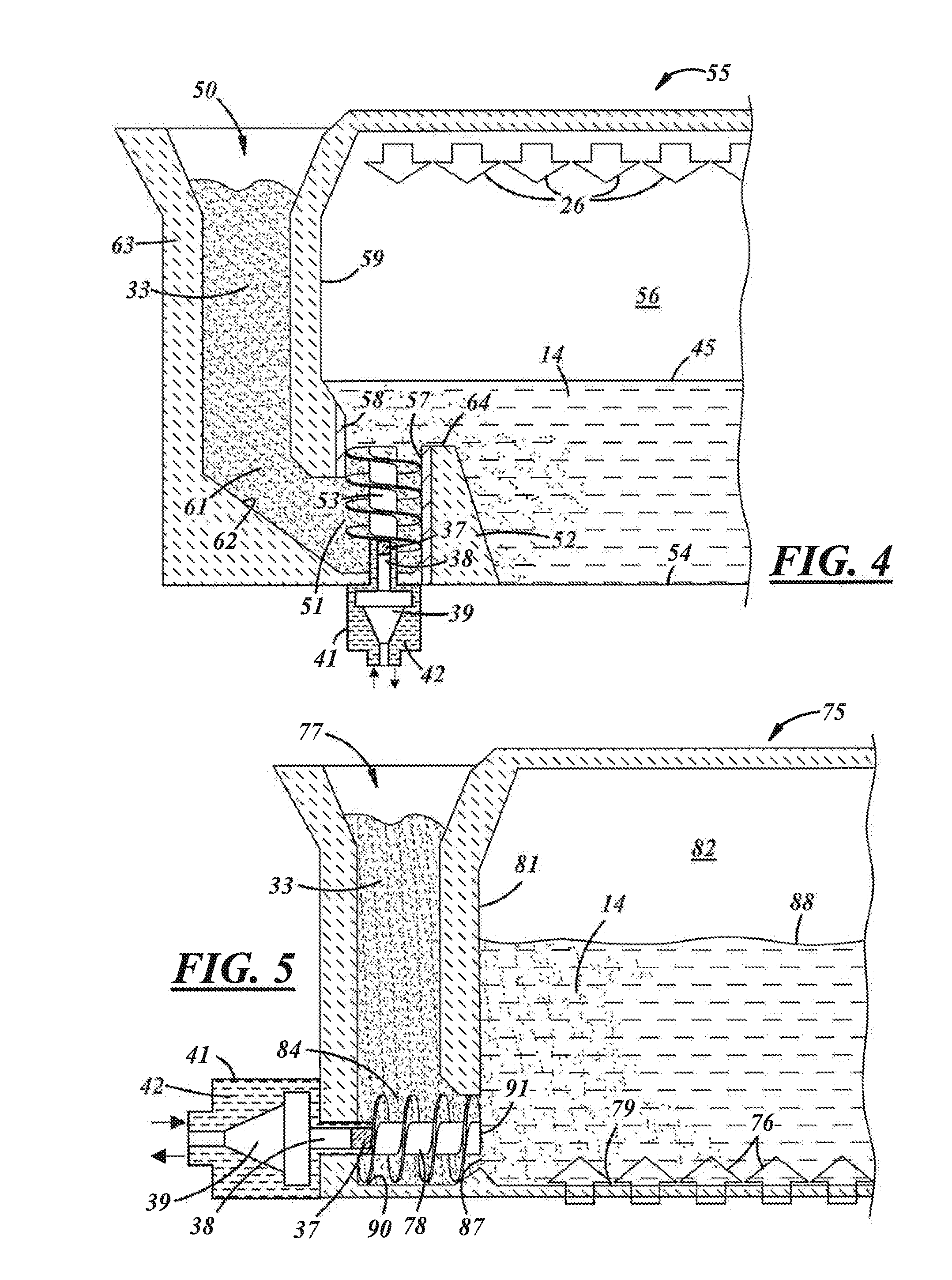Glass Furnace with Bottom Material Feed
a glass furnace and bottom material technology, applied in the field of glass furnaces with bottom material feed, can solve the problems of poor conductivity of dry batch materials, disturbance of dry materials by glass burner flames, and difficulty in operation, so as to reduce increase the efficiency of the furnace, and increase the amount of heat energy
- Summary
- Abstract
- Description
- Claims
- Application Information
AI Technical Summary
Benefits of technology
Problems solved by technology
Method used
Image
Examples
Embodiment Construction
[0019]FIG. 1 illustrates a schematic top view of a glass melting furnace generally designated by the reference numeral 10. The furnace has a furnace melt chamber 12 for melting the raw batch materials which in operation contains a pool 14 of molten glass as understood by those skilled in the art. One or more batch feed chutes 16 may be connected to the furnace 10, for example, at a bottom portion thereof. A batch feed inlet 17 may be coupled to each batch feed chute 16 for the introduction of raw batch materials to the feed chute. Each of the batch feed chutes 16 may contain a batch feeder such as a screw conveyor 18. Each of the batch feed chutes 16 may be coupled to a heater 20 having an outlet 21 as more fully described below. A dam wall 22 may be disposed between the screw conveyor 18 and the melt chamber 12. The dam wall 22 creates a well 23 or a series of wells prior to the melt chamber 12 and may contain the heaters 20. The dam wall 22 may be positioned between the heater out...
PUM
| Property | Measurement | Unit |
|---|---|---|
| grain size | aaaaa | aaaaa |
| melt level | aaaaa | aaaaa |
| thermal resistance | aaaaa | aaaaa |
Abstract
Description
Claims
Application Information
 Login to View More
Login to View More - R&D
- Intellectual Property
- Life Sciences
- Materials
- Tech Scout
- Unparalleled Data Quality
- Higher Quality Content
- 60% Fewer Hallucinations
Browse by: Latest US Patents, China's latest patents, Technical Efficacy Thesaurus, Application Domain, Technology Topic, Popular Technical Reports.
© 2025 PatSnap. All rights reserved.Legal|Privacy policy|Modern Slavery Act Transparency Statement|Sitemap|About US| Contact US: help@patsnap.com



